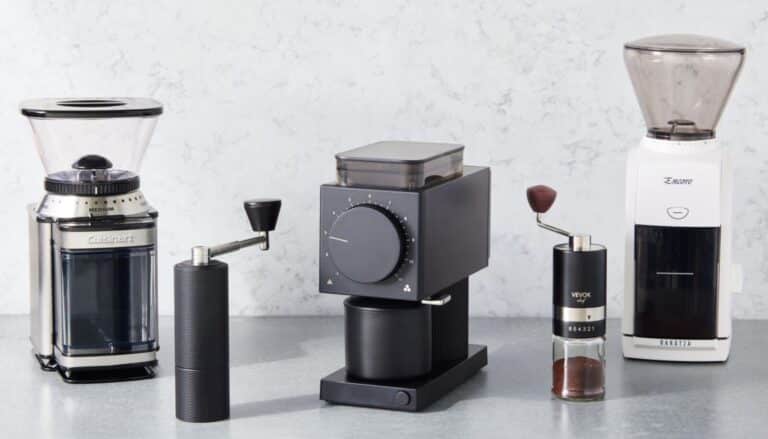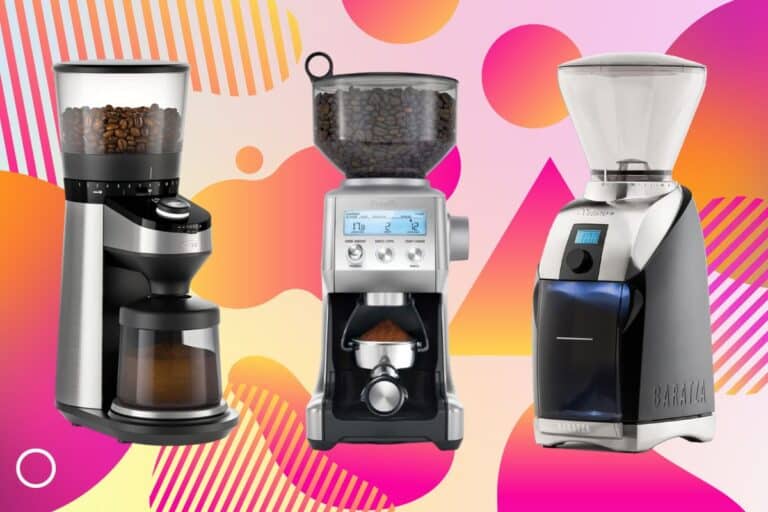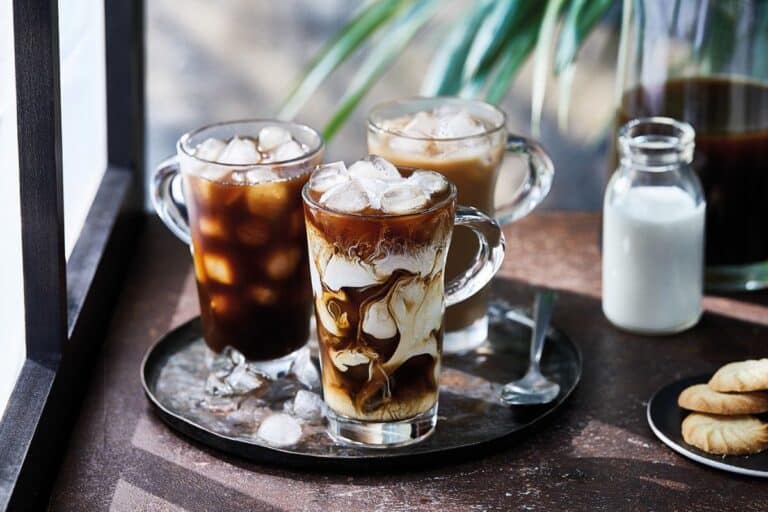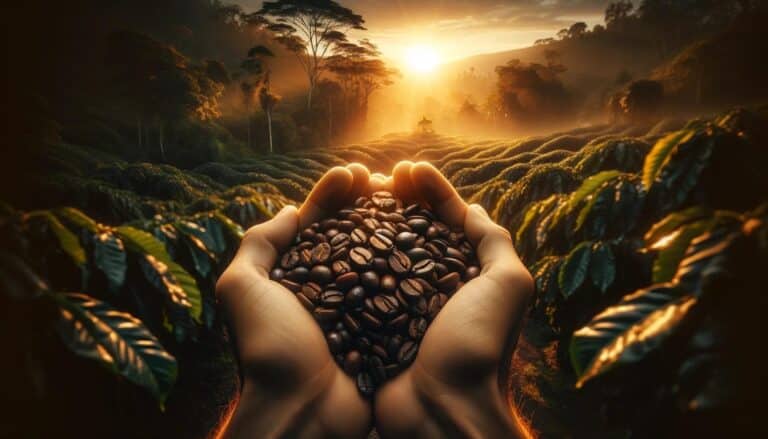Magic Coffee isn’t just any ordinary drink. It has a special mystery and charm about it. This coffee is different because it mixes unique ingredients, flavors, and many people say it has health benefits too. What makes Magic Coffee special is the extra things like spices, herbs, or other natural stuff added to it. These not only make it taste better but also give it its “magical” qualities.
Tracing the Origins
Now let’s talk about where Magic Coffee comes from. It started in different places around the world, and each place added their own special touch. Some people first made Magic Coffee as a medicine, using local herbs known to help heal. In other places, it was a fancy drink, loved for its deep and interesting tastes.
Current Popularity
In recent years, Magic Coffee has witnessed a surge in popularity, especially among health-conscious consumers and coffee enthusiasts seeking novel experiences. This resurgence is partly due to the global trend of revisiting traditional beverages and reinventing them for the modern palate. Additionally, the rise of social media and the specialty coffee movement have played significant roles in popularizing Magic Coffee. Pictures of its unique presentation, along with testimonials about its health benefits and rich taste, have made it a trendy choice in cafes and households alike.
Magic Coffee’s appeal also lies in its versatility – from being a morning energizer to a relaxing evening drink, it fits into various lifestyles and preferences. As it continues to captivate the imagination of people around the world, Magic Coffee remains a symbol of how traditional beverages can be reinvented and cherished across generations.
The Composition of Magic Coffee

Key Ingredients Used in Magic Coffee
Magic Coffee is renowned for its unique blend of ingredients, each contributing to its signature taste and health benefits. While the specific recipe can vary, some key components are commonly found in most variations of Magic Coffee.
- Base Coffee: The foundation of any Magic Coffee is a high-quality coffee, often a robusta or arabica blend. This choice of base coffee significantly impacts the overall flavor profile.
- Spices: Common spices include cinnamon, cardamom, nutmeg, and cloves. These spices not only add depth and warmth to the flavor but also bring their own health benefits.
- Herbs: Adaptogenic herbs like ashwagandha or ginseng are sometimes included for their stress-reducing properties.
- Natural Sweeteners: Honey, maple syrup, or stevia are preferred over refined sugar to enhance the flavor while keeping the beverage healthier.
- Milk or Milk Alternatives: Depending on preference, dairy or plant-based milks (like almond, soy, or oat milk) are used to add creaminess.
- Additional Supplements: Some recipes include cocoa, vanilla extract, or even collagen supplements to boost nutritional value and flavor.
The Role of Each Ingredient in Flavor and Health Benefits
- Base Coffee: Provides the classic, rich coffee taste and contains antioxidants. The caffeine in coffee is known for its stimulating effects on the brain.
- Spices:
- Cinnamon is known for its anti-inflammatory properties and can help regulate blood sugar levels.
- Cardamom adds a sweet, aromatic flavor and can aid in digestive health.
- Nutmeg has a warm, nutty flavor and is linked to improved sleep and digestion.
- Cloves, with their bold, spicy flavor, are rich in antioxidants.
- Herbs: Adaptogens like ashwagandha and ginseng help in managing stress and improving overall energy and focus.
- Natural Sweeteners: These provide a healthier alternative to refined sugar, adding sweetness without the negative health impacts. For example, honey is rich in antioxidants and has antibacterial properties.
- Milk or Milk Alternatives: They contribute to the creamy texture of the coffee. Dairy milk offers calcium and vitamin D, while plant-based alternatives often come fortified with these and other nutrients.
- Additional Supplements:
- Cocoa adds a rich flavor and is a good source of antioxidants.
- Vanilla extract enhances the aroma and flavor.
- Collagen supplements are believed to support skin, hair, and joint health.
Together, these ingredients create a beverage that is not only indulgent and flavorful but also offers various health benefits, making Magic Coffee a popular choice for those looking for more than just a caffeine fix.
The Brewing Process of Magic Coffee
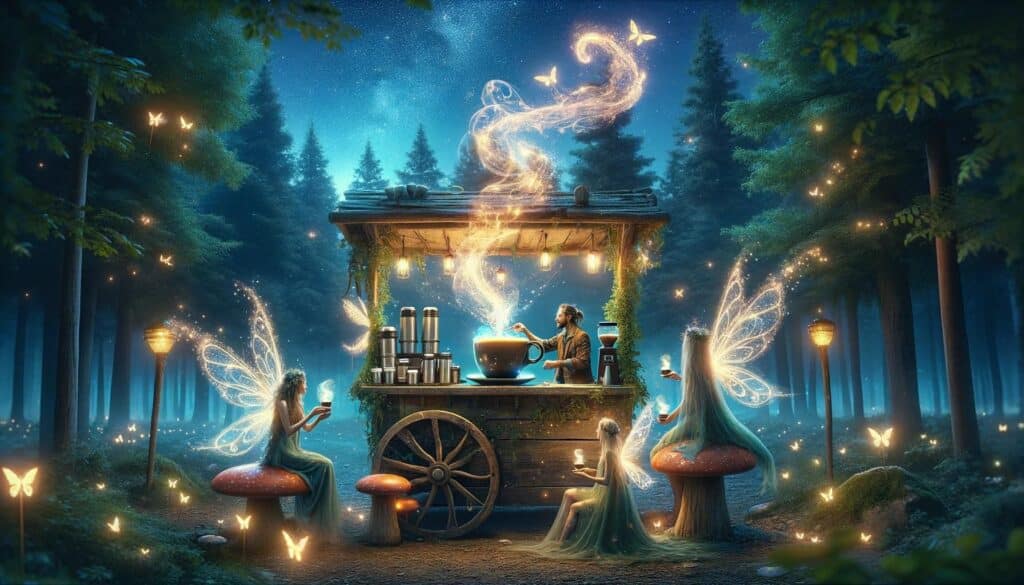
Step-by-Step Guide to Brewing Magic Coffee
- Select Your Coffee Beans: Start with high-quality coffee beans, preferably a robusta or arabica blend. Grind the beans to a medium-fine consistency, similar to granulated sugar.
- Measure and Mix Dry Ingredients: In a small bowl, combine your ground coffee with the chosen spices (like cinnamon, cardamom, nutmeg, and cloves). The quantity of each spice can be adjusted according to taste.
- Boil Water: Bring water to a near-boil. The ideal temperature is around 195°F to 205°F. This helps extract the flavors efficiently without scalding the coffee.
- Brew the Coffee: Use your preferred method of brewing – French press, drip, or espresso machine. Add the coffee-spice mixture to the coffee maker. If using a French press, let it steep for about 4 minutes before pressing.
- Add Sweeteners and Supplements: While the coffee is brewing, add any natural sweeteners (like honey or maple syrup) and supplements (like collagen) to your cup.
- Froth the Milk: If you’re using milk or a milk alternative, heat it up and froth it. For a dairy-free version, almond or oat milk froths well.
- Combine and Serve: Pour the brewed coffee over the sweeteners and supplements in your cup. Stir well. Top with frothed milk, and if desired, sprinkle a little bit of cinnamon or cocoa powder for garnish.
Tips for Perfecting the Brew at Home
- Quality of Ingredients: Always start with high-quality coffee and fresh spices. The better the ingredients, the more flavorful the Magic Coffee.
- Grind Size Matters: The grind size of your coffee should match your brewing method to ensure optimal flavor extraction.
- Water Temperature: Avoid using boiling water as it can burn the coffee and spices, leading to a bitter taste.
- Experiment with Spices: Don’t be afraid to experiment with different spice combinations to find what best suits your taste.
- Consistency in Measurement: Use consistent measurements for coffee and spices to achieve a balanced flavor.
- Sweeteners and Milk: Adjust the amount of sweetener and the choice of milk according to your dietary preferences and taste.
- Clean Your Equipment: Regularly clean your coffee maker and other equipment to prevent the buildup of coffee oils and residue.
- Practice Makes Perfect: Don’t be discouraged if your first few attempts don’t turn out as expected. Brewing Magic Coffee is an art that improves with practice.
By following these steps and tips, you can create a delightful cup of Magic Coffee that not only energizes but also offers a unique sensory experience.
Health Benefits and Myths of Magic Coffee

Scientific Evidence of Health Benefits
- Antioxidant Properties: Magic Coffee, owing to its base of high-quality coffee beans, is rich in antioxidants like chlorogenic acid. These antioxidants can help reduce oxidative stress in the body and lower the risk of certain diseases.
- Mental Alertness and Cognitive Function: The caffeine in coffee is known to enhance brain function, improving alertness, concentration, and mood. This makes Magic Coffee a popular choice for an energy boost.
- Spices for Digestive Health: Spices like cinnamon and cardamom, commonly used in Magic Coffee, have been shown to aid in digestion and have anti-inflammatory properties. For instance, cinnamon is known to regulate blood sugar levels, beneficial for diabetes management.
- Adaptogenic Effects: Herbs like ashwagandha in some Magic Coffee recipes are adaptogens that help the body cope with stress. They can improve energy levels and reduce anxiety and stress-related symptoms.
- Cardiovascular Health: Some studies suggest that moderate coffee consumption can support heart health by improving blood circulation and potentially reducing the risk of stroke.
- Metabolic Benefits: Regular consumption of coffee, including Magic Coffee, has been associated with a lower risk of metabolic syndrome, including conditions like obesity and type 2 diabetes.
Debunking Common Myths about Magic Coffee
- Myth: Magic Coffee is a Miracle Cure-All: While Magic Coffee has various health benefits, it is not a cure-all solution. Its effects vary from person to person, and it should be consumed as part of a balanced diet.
- Myth: Magic Coffee Leads to Dehydration: Contrary to the myth, moderate coffee consumption does not lead to dehydration. However, it is still important to maintain regular water intake.
- Myth: Magic Coffee Causes Insomnia for Everyone: While caffeine can disrupt sleep patterns, sensitivity varies among individuals. People with caffeine sensitivity should limit their consumption, especially in the evening.
- Myth: Magic Coffee is High in Calories: Magic Coffee can be high in calories, but this largely depends on the additives like sweeteners and milk. Using natural sweeteners and opting for low-calorie milk alternatives can make it a healthier choice.
- Myth: Magic Coffee is Not Suitable for Children: While it’s true that caffeine should be limited in children, a decaffeinated version of Magic Coffee, with its healthy spices and herbs, can be suitable for younger audiences.
- Myth: Magic Coffee Aggravates Stomach Ulcers: Coffee can increase stomach acid, but there is no direct evidence linking it to the aggravation of ulcers. However, individuals with specific health conditions should consult with a healthcare provider.
In conclusion, while Magic Coffee offers several health benefits, it’s essential to consume it in moderation and as part of a balanced diet. Understanding the facts and debunking the myths can help enjoy this beverage in a healthy and informed way.
Cultural Significance of Magic Coffee

Magic Coffee in Different Cultures
Magic Coffee, with its diverse ingredients and preparation methods, holds a special place in various cultures around the world. Each region has adapted it to reflect local tastes and traditions, turning it into more than just a beverage.
- Middle Eastern Variants: In the Middle East, coffee often includes cardamom and sometimes saffron. It’s a symbol of hospitality, served to guests as a sign of welcome and respect.
- South Asian Influence: Countries like India have long used spices like cinnamon and cardamom in their traditional coffee, known for its digestive and medicinal properties. Here, coffee is often intertwined with Ayurvedic practices.
- European Interpretations: In Europe, particularly in countries like Italy and France, coffee is an integral part of social life. While less spiced, the emphasis is on the art of coffee making, and it often includes herbal infusions.
- African Traditions: In Africa, particularly in Ethiopia – the birthplace of coffee – traditional coffee ceremonies are a common practice, where coffee is brewed with spices and herbs in a ritualistic manner, symbolizing community and friendship.
- Latin American Variants: In Latin America, coffee is often brewed with spices like cinnamon and clove, reflecting the region’s rich spice trade history. Here, coffee is a staple in both social and religious gatherings.
More Than Just a Beverage in Certain Societies
- Symbol of Hospitality and Respect: In many cultures, serving Magic Coffee to a guest is a sign of hospitality and respect. The act of preparing and offering coffee can be as significant as the drink itself.
- Social Connector: Coffee shops and cafes, serving various forms of Magic Coffee, have become social hubs where people gather for conversation, work, or leisure.
- Integral to Rituals and Ceremonies: In some societies, Magic Coffee is an integral part of religious and cultural ceremonies, signifying unity, tradition, and a deep respect for the ancient art of coffee brewing.
- Artistic and Literary Associations: Coffee, including its magical variants, has been a staple in artistic and literary circles, often associated with creativity, intellectual discussion, and artistic expression.
- Health and Wellness Practices: With its blend of spices and herbs, Magic Coffee is often linked to health and wellness practices. In holistic health traditions like Ayurveda, it is used for its healing properties.
- Economic Significance: For many coffee-growing regions, the production and export of coffee, including special blends like Magic Coffee, are vital to their economies and livelihoods.
In conclusion, Magic Coffee is more than a beverage; it’s a cultural artifact, rich in history and significance. It reflects the traditions, values, and tastes of the societies that have embraced and transformed it, making it a truly global phenomenon.
Variations and Innovations of Magic Coffee
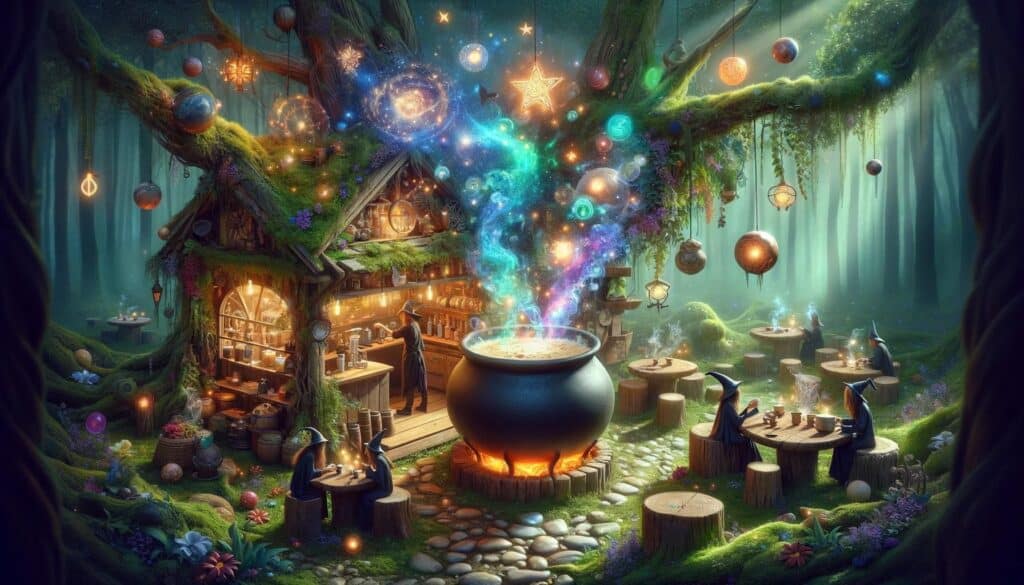
Different Versions of Magic Coffee Worldwide
Magic Coffee has evolved into a variety of forms around the globe, each version reflecting the unique cultural and culinary heritage of its region.
- Turkish Magic Coffee: Infused with cardamom and sometimes sweetened with Turkish delight, this variant is known for its strong, rich flavor and thick consistency.
- Indian Spiced Coffee (Masala Coffee): A blend of coffee with spices like ginger, cinnamon, and sometimes even lemongrass, reflecting the country’s rich spice heritage.
- Vietnamese Phin Coffee: A unique drip method using a ‘Phin’ filter, often combined with spices and sweetened condensed milk for a creamy texture.
- Italian Caffè d’Autore: A creative interpretation of coffee, often incorporating ingredients like Amaretto, hazelnuts, or chocolate for a gourmet experience.
- Scandinavian Kaffeost: A surprising combination where coffee is enjoyed with chunks of cheese, offering a unique blend of savory and bitter flavors.
- Mexican Café de Olla: Brewed in a clay pot with cinnamon and piloncillo (unrefined cane sugar), this variant is known for its rustic and aromatic charm.
- Ethiopian Spiced Coffee: Often part of a traditional coffee ceremony, it includes spices like cardamom, cinnamon, and cloves, embodying the rich coffee culture of its origin.
Innovative Recipes and Modern Twists
- Cold Brew Magic Coffee: Combining the smoothness of cold brew with the richness of Magic Coffee spices for a refreshing twist.
- Vegan Magic Coffee: Utilizing plant-based milk alternatives and natural sweeteners to cater to vegan preferences without compromising on flavor.
- Magic Espresso Tonics: A fusion of espresso with tonic water and a hint of spice, offering a refreshing and effervescent take on traditional Magic Coffee.
- Magic Coffee with Superfoods: Incorporating superfoods like cacao, turmeric, or matcha to boost the nutritional profile and add unique flavors.
- Nitro Magic Coffee: Infused with nitrogen to create a creamy, stout-like texture, adding a modern twist to the traditional Magic Coffee experience.
- Molecular Magic Coffee: Applying molecular gastronomy techniques to create foams, spheres, or gels for a contemporary and artistic presentation.
- Seasonal Magic Coffee: Seasonal variations using ingredients like pumpkin spice in autumn or peppermint in winter, aligning Magic Coffee with seasonal trends.
These variations and innovations not only demonstrate the versatility of Magic Coffee but also how it continues to evolve and adapt to modern tastes and dietary preferences. From traditional brewing methods to avant-garde culinary techniques, Magic Coffee remains a dynamic and ever-evolving beverage, embracing both its heritage and the future of coffee culture.
Magic Coffee in the Culinary World
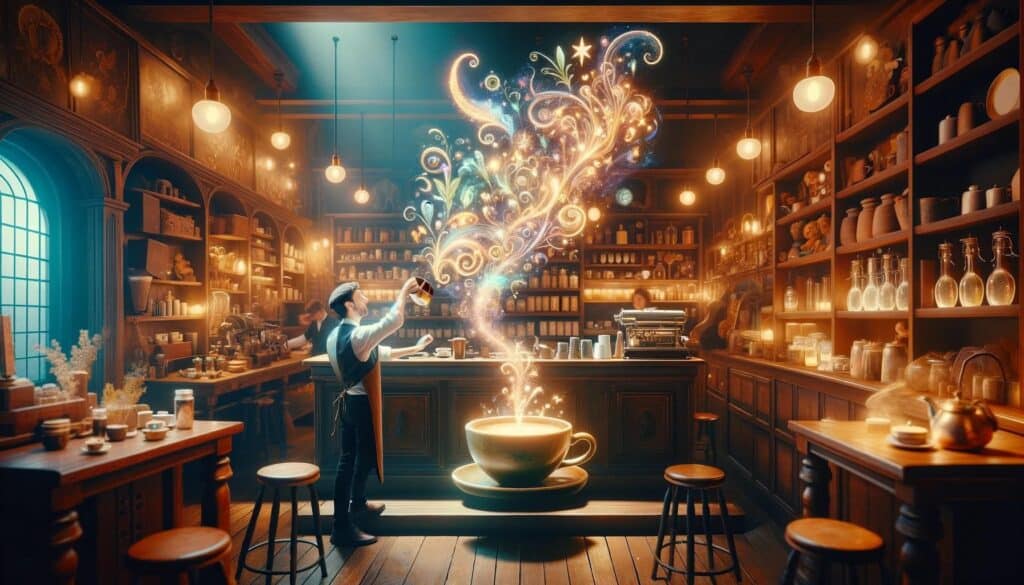
Its Use in Cooking and Baking
Magic Coffee has transcended beyond being just a beverage and has found its way into the culinary world, adding unique flavors and aromas to various dishes.
- Desserts and Baked Goods: Magic Coffee is often used in desserts like tiramisu, coffee-flavored cakes, and mousses, where its rich and aromatic profile enhances the overall flavor. It’s also used in coffee-infused icings and glazes for donuts and pastries.
- Sauces and Marinades: In savory dishes, Magic Coffee is used in sauces and marinades, especially for meats. Its robust flavor complements the richness of red meat and can tenderize and add depth to the dish.
- Coffee Rubs: A dry rub made with ground Magic Coffee beans and spices such as garlic powder, paprika, and brown sugar is popular for grilling or roasting meats, imparting a unique, smoky flavor.
- Coffee-Infused Beverages and Cocktails: Magic Coffee is used in creating innovative cocktails and non-alcoholic beverages, adding complexity and a nuanced flavor profile.
Notable Chefs and Restaurants Incorporating Magic Coffee into Their Menus
- Chef Aarón Sánchez: Known for his modern Mexican cuisine, Chef Sánchez has experimented with Magic Coffee in creating rich, complex sauces and marinades for his signature dishes.
- Noma (Copenhagen): Renowned for its innovation, Noma has incorporated Magic Coffee in various forms, from coffee-infused broths to desserts, showcasing its versatility.
- The French Laundry (California): This celebrated restaurant has used Magic Coffee as a component in its dessert menus, especially in dishes like coffee custard and coffee-infused chocolates.
- Osteria Francescana (Italy): Chef Massimo Bottura, known for his avant-garde cuisine, has used Magic Coffee in creating innovative dishes that reflect a blend of tradition and modernity.
- Blue Hill at Stone Barns (New York): Here, Magic Coffee has been used in both savory and sweet creations, often highlighting local and seasonal ingredients.
- Attica (Australia): Known for its unique Australian cuisine, Attica has incorporated Magic Coffee into its menu, using it in both meat dishes and desserts to add a distinct flavor.
These chefs and restaurants showcase how Magic Coffee can be a versatile ingredient, elevating dishes with its unique flavor profile. Its incorporation into high-end gastronomy reflects its growing popularity and the potential for further creative uses in the culinary world.
DIY Magic Coffee at Home
Equipment Needed to Make Magic Coffee
- Coffee Grinder: For fresh grinding of coffee beans, ensuring a richer flavor.
- Brewing Device: A French press, drip coffee maker, or espresso machine, depending on your preferred brewing method.
- Milk Frother: For those who enjoy a creamy texture, a milk frother is essential for creating frothed milk or milk alternatives.
- Spice Grinder or Mortar and Pestle: To finely grind the spices that will be added to the coffee.
- Kettle or Saucepan: For boiling water or heating milk.
- Measuring Spoons and Scale: For accurate measurement of coffee, spices, and sweeteners.
- Filter (if using drip method): Paper or reusable filters for drip coffee makers.
- Thermometer (optional): To measure water temperature for optimal brewing.
Simple Recipes for Beginners
- Basic Magic Coffee Recipe:
- Grind 2 tablespoons of coffee beans to a medium-fine consistency.
- Mix ground coffee with ¼ teaspoon of ground cinnamon and a pinch each of nutmeg and cardamom.
- Brew using your preferred method (French press recommended).
- Sweeten with honey or maple syrup to taste.
- Add hot, frothed milk or a milk alternative.
- Sprinkle a little cinnamon on top for garnish.
- Iced Magic Coffee:
- Prepare a stronger batch of Magic Coffee (to account for dilution from ice).
- Mix in natural sweetener while the coffee is still hot.
- Allow the coffee to cool, then pour over ice.
- Add a splash of cold, frothed milk or milk alternative.
- Garnish with a sprinkle of cocoa powder or a cinnamon stick.
- Vegan Magic Coffee:
- Use plant-based milk like almond, soy, or oat milk.
- Replace honey with agave syrup or stevia.
- Follow the basic Magic Coffee recipe for brewing.
- Ensure all spices and additives are vegan-friendly.
- Decaffeinated Magic Coffee:
- Use decaffeinated coffee beans and follow the basic recipe.
- This version is suitable for those who are sensitive to caffeine or prefer a late evening drink.
By starting with these simple recipes and basic equipment, beginners can easily make Magic Coffee at home and experiment with different flavors and variations to suit their taste preferences.
Where to Find the Best Magic Coffee
Recommendations for Cafes and Online Stores
- Specialty Coffee Shops: Many specialty coffee shops around the world now offer Magic Coffee on their menus. Look for cafes that source high-quality, ethically produced coffee beans and have a reputation for creative brewing methods.
- Cultural Coffee Houses: Visit coffee houses known for their cultural heritage, especially those in regions where Magic Coffee has its roots, like the Middle East, Africa, and South Asia.
- Online Specialty Coffee Retailers: Websites dedicated to specialty coffee often sell Magic Coffee blends or the individual ingredients needed to make it at home. Look for retailers that provide detailed descriptions of the coffee’s origin, flavor profile, and brewing recommendations.
- Health and Wellness Stores: For Magic Coffee with a focus on health benefits, check out health food stores or online wellness retailers. They often stock coffee blends with added herbs and spices for wellness.
- Global Marketplaces: Online global marketplaces like Amazon, Etsy, or eBay can be excellent sources for finding unique Magic Coffee blends from different parts of the world.
What to Look for When Buying Magic Coffee
- Quality of Coffee Beans: The base of any good Magic Coffee is high-quality coffee beans. Look for beans that are freshly roasted, preferably with information on their origin and roast date.
- Freshness of Spices: Ensure that the spices used are fresh and of high quality. The aroma and flavor of spices diminish over time, so fresher spices will significantly enhance your Magic Coffee experience.
- Organic and Ethical Sourcing: Consider coffee and spices that are organically grown and ethically sourced. This not only ensures better quality but also supports sustainable and fair practices.
- Customizability: Some retailers offer customizable Magic Coffee blends. This option is great for tailoring the coffee to your specific taste preferences and health needs.
- Reviews and Recommendations: Check customer reviews and recommendations, especially when purchasing from online stores. Reviews can provide insights into the quality and taste of the Magic Coffee.
- Packaging and Storage: Look for packaging that protects the coffee from light, air, and moisture, as these can affect its freshness and flavor.
By keeping these factors in mind, you can find Magic Coffee that not only delights your taste buds but also aligns with your health preferences and ethical values. Whether you explore local cafes or browse online stores, there’s a world of Magic Coffee waiting to be discovered.
Conclusion: Embracing the Enchantment of Magic Coffee
Recap of the Unique Aspects of Magic Coffee
Magic Coffee stands out as a beverage that transcends the ordinary coffee experience. Its uniqueness lies in:
- Rich Blend of Ingredients: From high-quality coffee beans to a variety of spices and herbs, each component of Magic Coffee contributes to its distinctive flavor and aroma.
- Health Benefits: Beyond its alluring taste, Magic Coffee is celebrated for its potential health benefits, including antioxidants, mental alertness, and stress reduction, thanks to its combination of caffeine and adaptogenic herbs.
- Cultural Diversity: Magic Coffee reflects a tapestry of cultural traditions, with each region adding its unique touch to the classic brew. From the spiced coffees of the Middle East to the innovative creations in modern cafes, it represents a rich cultural heritage.
- Culinary Versatility: Its use in cooking and baking showcases Magic Coffee’s versatility, enhancing both sweet and savory dishes with its robust flavor.
- Innovation and Creativity: The evolving world of Magic Coffee, from cold brews to vegan adaptations, illustrates the beverage’s ability to adapt to contemporary tastes and dietary preferences.
Encouragement to Try and Explore its Diverse World
Whether you are a coffee enthusiast, a culinary adventurer, or someone seeking a healthy twist to your daily brew, Magic Coffee offers a world of experiences. Each cup is an opportunity to explore different cultures, tastes, and traditions. The joy of Magic Coffee lies not just in its consumption but also in the process of discovering and experimenting with its myriad forms.
We encourage you to step into this enchanting world of Magic Coffee. Visit a local specialty cafe, experiment with brewing it at home, or incorporate it into your cooking. With every sip and every use, you’ll uncover more of the magic that this extraordinary beverage holds.
Magic Coffee is more than just a drink; it’s a journey through flavors, aromas, and traditions. So, embrace the magic, and let your taste buds explore the rich and diverse world of Magic Coffee.
References and Further Reading
- Delish. (n.d.). Magic Coffee. Retrieved from https://www.delish.com/uk/food-news/a42444126/magic-coffee/
- Latte Art Guide. (n.d.). Magic Coffee. Retrieved from https://www.latteartguide.com/magic-coffee/
- Barista & Co. (n.d.). How to Make Magic Coffee at Home. Retrieved from https://baristaandco.com/blogs/news/how-to-make-magic-coffee-at-home
